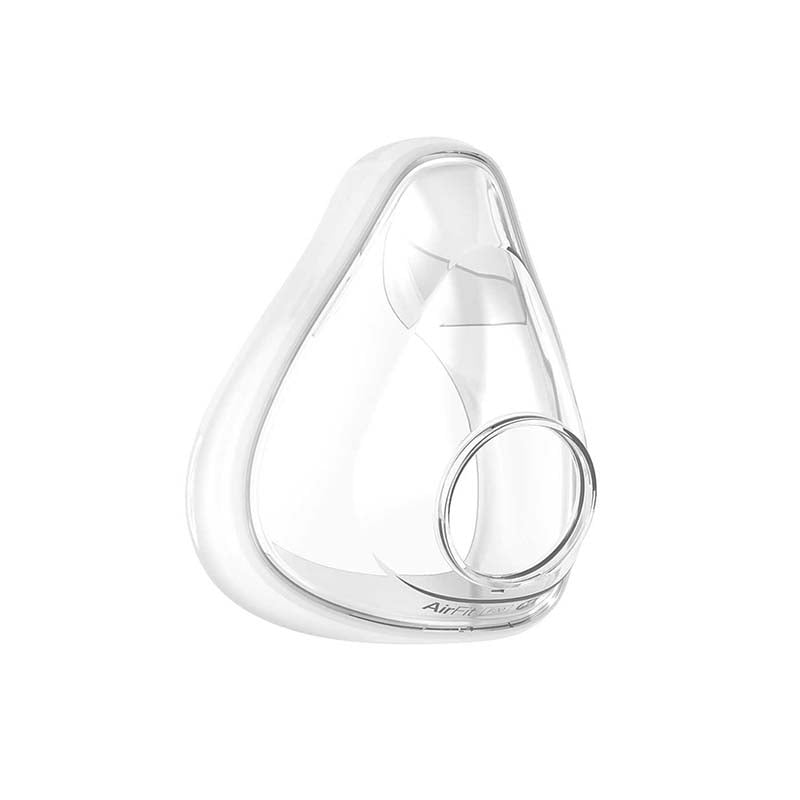Comparison, Featured
Comparison of the AirFit F20 and AirTouch F20 CPAP Masks
When it comes to Continuous Positive Airway Pressure (CPAP) therapy, the choice of mask can significantly impact the effectiveness of treatment and the overall comfort of the user. Two of the most popular full-face CPAP masks on the market are the AirFit F20 and the AirTouch F20 from ResMed. While both masks are designed to provide a secure and comfortable fit, they have some key differences that might make one a better choice for you than the other. This article will break down these differences to help you make an informed decision.

F20 AirTouch
Foam

F20 AirFit
Cushion
1. Cushion Material
The most significant difference between the AirFit F20 and the AirTouch F20 lies in the material used for the cushion that makes contact with your face.
- AirFit F20: This mask features a cushion made of traditional silicone. Silicone cushions are known for their durability, easy maintenance, and the ability to create a strong seal against the skin. The silicone cushion in the AirFit F20 is soft and flexible, conforming to the face to reduce leaks while maintaining comfort throughout the night.
- AirTouch F20: The AirTouch F20, on the other hand, uses an UltraSoft memory foam cushion. Memory foam provides a more adaptive fit that conforms closely to the contours of the face. This material is especially beneficial for users with sensitive skin, as it reduces the risk of skin irritation and pressure sores. However, the memory foam cushion needs to be replaced more frequently (approximately every 30 days) compared to the silicone cushion, which is more durable.
2. Comfort and Fit
Both masks are designed to offer comfort and a secure fit, but the materials used for the cushion impact how each mask feels on the face.
- AirFit F20: The silicone cushion is slightly firmer compared to memory foam, which some users may find reassuring as it feels more secure. It is also less likely to shift during sleep, maintaining a strong seal even if you move around a lot at night.
- AirTouch F20: The memory foam cushion of the AirTouch F20 is softer and more pliable, providing a more personalized fit. This can be particularly advantageous for those who experience discomfort or pressure points with silicone cushions. However, because the foam is softer, it might require more frequent adjustments to maintain an optimal seal.
3. Maintenance and Durability
Maintenance and the longevity of the mask are crucial factors to consider, especially for those looking for low-maintenance options.
- AirFit F20: The silicone cushion is easy to clean and can be wiped down daily. It is more resistant to oils and sweat from the skin, making it more durable over time. Generally, the silicone cushion can last several months before needing to be replaced.
- AirTouch F20: The memory foam cushion of the AirTouch F20 is not washable and should only be wiped with a dry cloth. The foam is more susceptible to wear and tear, meaning it needs to be replaced more frequently, about every 30 days. This can lead to higher maintenance costs over time compared to the silicone cushion.
4. Interchangeability of Cushions
One of the advantages of choosing between the AirFit F20 and AirTouch F20 masks is that the cushions are interchangeable.
- Cushion Interchangeability: If you already own one of these masks, you can switch between the silicone cushion from the AirFit F20 and the memory foam cushion from the AirTouch F20 without needing to purchase an entirely new mask. This flexibility allows you to experiment with both types of cushions to determine which one you prefer or to switch based on your skin’s needs or comfort preferences over time. For example, you might use the silicone cushion for durability and lower maintenance, and the memory foam cushion during periods when you need extra softness and comfort.
5. User Experience and Preferences
Ultimately, the choice between the AirFit F20 and the AirTouch F20 may come down to personal preference and specific needs.
- AirFit F20: This mask is often favored by users who prioritize durability and a firm, reliable seal. The silicone cushion’s robustness makes it a go-to choice for those who want a mask that requires less frequent replacement and is easy to clean.
- AirTouch F20: The AirTouch F20 is ideal for users who seek maximum comfort and have sensitive skin. The softness of the memory foam cushion is a significant draw, providing a gentle and cushioned feel that reduces pressure marks and irritation. However, users should be prepared for the need to replace the cushion more frequently.
6. Cost Considerations
The initial cost of both masks is generally similar, but the ongoing cost of replacement cushions can differ.
- AirFit F20: The cost is generally lower in the long run due to the durability of the silicone cushion, which does not require frequent replacement.
- AirTouch F20: While the upfront cost is comparable to the AirFit F20, the need to replace the memory foam cushion every 30 days can lead to higher ongoing expenses.
Conclusion
Both the AirFit F20 and AirTouch F20 are excellent CPAP masks, each with its own strengths. The AirFit F20 is better suited for those who value durability and easy maintenance, while the AirTouch F20 is ideal for users who prioritize comfort, especially if they have sensitive skin.
The ability to interchange the cushions between these two masks adds another layer of convenience and flexibility, allowing you to customize your CPAP experience to your needs. Whether you choose the AirFit F20 for its long-lasting silicone cushion or the AirTouch F20 for its soft and adaptive memory foam cushion, you can rest assured that you are getting a high-quality mask that will enhance the effectiveness and comfort of your CPAP therapy.



